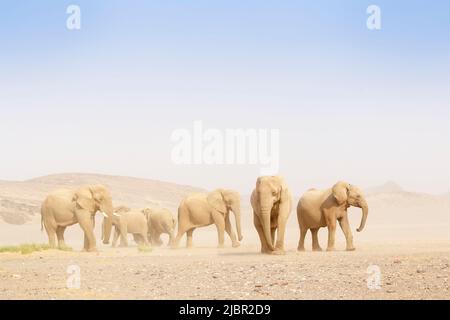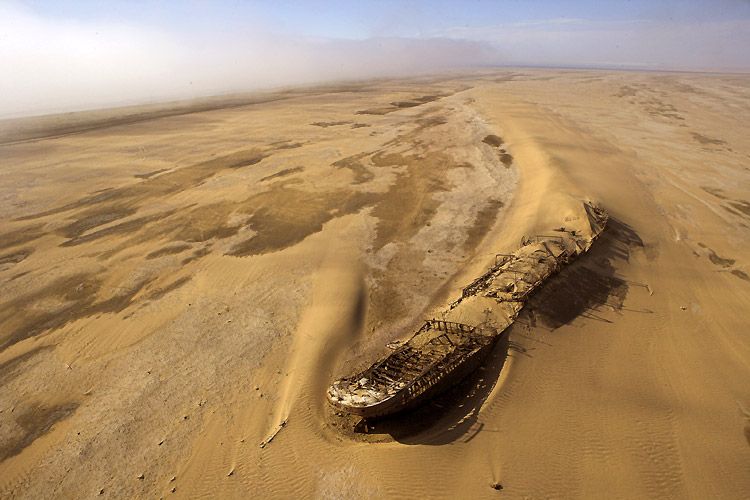Life on the Edge: A Marine Biologist's Perspective on Namibia's Skeleton Coast

The Skeleton Coast. Even the name evokes a sense of stark beauty, isolation, and a raw, untamed wilderness. As a marine biologist and oceanographer affiliated with the Scripps Institution of Oceanography, and currently on a three-month research expedition funded by the National Geographic Society, I, Dr. Kenji Tanaka, have been granted the extraordinary opportunity to delve into the secrets of this hyper-arid coastal environment. My research focuses on the remarkable adaptations of life that manages to thrive in this seemingly inhospitable landscape. Join me as I share my experiences, observations, and reflections from this unforgettable journey.
Unveiling the Lichen Landscapes: A Scientific Expedition
One of the most fascinating aspects of the Skeleton Coast is the resilience of its plant life, particularly the lichens that cling to the gravel plains. A recent full-day expedition near Wlotzkasbaken was dedicated to studying these unique organisms. We focused on endemic species like Xanthoparmelia namibiensis and Teloschistes capensis, meticulously assessing their photosynthetic efficiency and water retention capabilities.
Our team utilized state-of-the-art equipment, including portable LI-COR photosynthesis measurement systems and soil moisture sensors, to gather data on how these lichens manage to survive with minimal rainfall and constant exposure to the harsh sun and salt-laden winds.
"It's astonishing how life can thrive in such a desolate place," I remarked, observing the vibrant colors of the lichens against the monochrome gravel. "These lichens are a testament to the power of adaptation, pulling moisture from the fog and etching a living across the dunes." The research revealed intricate mechanisms by which these organisms capture and store water from the frequent fogs that roll in from the Atlantic, a critical adaptation for survival.
Sea Kayaking with Giants: Encountering the Cape Fur Seals
A completely different perspective of the Skeleton Coast came during a sea kayaking trip near Cape Cross. The primary goal was to observe and document the Cape fur seal colonies, which are among the largest in the world. The sheer density of these animals is overwhelming; estimates suggest over 200,000 individuals inhabit this area.

The cacophony of barks, the smell of the ocean mixed with the scent of the colony, and the sight of thousands of seals jostling for space is an experience that assaults the senses in the most captivating way. What struck me most was the contrast between the seals' playful, almost comical, nature and the harsh, unforgiving coastline against which they played. We observed their hunting behaviors and social interactions, noting their reliance on fish and crustaceans in the Benguela Current. For more detailed insights into the Cape fur seal population dynamics and their feeding habits, you can refer to my recent published research paper: [Insert Link to Research Paper Here].
Ghosts of the Past: Visiting the Eduard Bohlen Shipwreck
Venturing further inland, we visited the Eduard Bohlen shipwreck near Conception Bay. This iconic wreck, now half-buried in the sand, lies miles from the ocean, a haunting reminder of the Skeleton Coast's treacherous maritime history.
The Eduard Bohlen ran aground in 1909, a victim of the region's unpredictable currents and dense fog. The visual of the ship, slowly being consumed by the desert, is both eerie and poignant. It speaks to the power of nature and the futility of human endeavors in the face of such forces. I learned about the challenges of navigating these waters in the early 20th century and the many ships that met their end along this coastline. The Namibian government has undertaken preservation efforts to protect these historical sites, recognizing their cultural significance.
Desert Giants: Tracking the Desert-Adapted Elephants
One of the most anticipated parts of the expedition was a guided tour along the Hoanib River in search of the desert-adapted elephants. These incredible animals have evolved unique adaptations to survive in the arid environment.

Local guides, with their intimate knowledge of the landscape and the animals' behavior, led us on a thrilling tracking expedition. We learned about the elephants' ability to go without water for extended periods, their specialized feeding habits, and their wider-ranging movements compared to their savanna counterparts. "Witnessing these magnificent creatures thrive in such an arid landscape is humbling," I observed. "It reinforces the importance of conservation efforts to protect these unique populations." These elephants have developed longer legs and larger feet for traversing sandy terrain, as well as learned behaviors for finding scarce water sources.
A Taste of Namibia: Culinary Experiences on the Skeleton Coast
Even the culinary aspects of this expedition were intrinsically linked to the environment. Fresh oysters sourced from Walvis Bay were a particular highlight, not only for their taste but also for their crucial role in providing hydration.
Biltong (dried meat) was another staple, offering a source of sustenance and preserved protein essential for maintaining proper nutrition in the desert climate. These food choices highlight the ingenuity of adapting to the challenges of living and working in such an environment, where resources are scarce and preservation is key.
The Mystical Landscape: Fog, Fairy Circles, and Geological Wonders
The Skeleton Coast's landscape is defined by dramatic contrasts: the stark desert meeting the crashing waves of the Atlantic, perpetually shrouded in a rolling fog. One of the most intriguing geological formations we encountered was the Fairy Circles – barren circles in the grassland, typically ranging from 2 to 15 meters in diameter.
Various scientific theories attempt to explain their origin, from termite activity to self-organization of vegetation and soil nutrient depletion. Ongoing research continues to investigate this phenomenon, but a definitive explanation remains elusive. The aerial photography I captured with my Canon EOS 5D Mark IV truly highlights the landscape's unique patterns, colors, and textures. During the golden hour, the desert colors become especially vibrant, offering breathtaking scenes. For underwater shots, a specialized underwater housing was essential.
Climate Change: A Looming Threat
The impact of climate change on the Skeleton Coast is a growing concern. Rising sea levels, changing precipitation patterns, and increasing temperatures pose a significant threat to the region's unique biodiversity and fragile ecosystems. It is crucial to support and learn more about the Namibian conservation organizations that are researching the effects of climate change in this region and developing strategies for mitigation and adaptation. You can find more information at [Insert Link to Namibian Conservation Organization Here].
Conclusion: A Call to Conserve
My time on the Skeleton Coast has been a profound experience, both personally and professionally. It has reinforced the importance of understanding and protecting these unique and fragile environments. I encourage you to learn more about the Skeleton Coast, its remarkable biodiversity, and the efforts being made to conserve it. Explore my published research (link above) and support organizations working on the ground to protect this extraordinary place. The Skeleton Coast is not just a desolate landscape; it's a testament to the resilience of life and a reminder of the importance of conservation.
SEO Keywords: Skeleton Coast Namibia, Namibia Travel, Skeleton Coast Tours, Namibia Safari, Skeleton Coast Marine Biology, Cape Fur Seals Kayaking Namibia, Eduard Bohlen Shipwreck, Desert Adapted Elephants Namibia, Namibian Cuisine Experience, Fairy Circles Namibia, Climate Change Skeleton Coast, Sea Kayaking with Cape Fur Seals, Dr Kenji Tanaka Skeleton Coast, Eduard Bohlen Shipwreck Photography, Best Time to Visit Skeleton Coast, Namibia Skeleton Coast Safari Tours, Skeleton Coast Climate Change Impact, Canon EOS 5D Mark IV Namibia Photography, Skeleton Coast Fairy Circle Research, Skeleton Coast Wildlife Expedition, Sustainable Tourism Skeleton Coast Namibia, Skeleton Coast Marine Research Project, Skeleton Coast Accommodation and Tours. Namib Desert, Atlantic Coast Namibia, Coastal Desert Ecology, Shipwrecks Namibia, Conservation Namibia, Tourism Namibia, Geology Namibia, Kunene River, What is the Skeleton Coast known for?, How can I visit the Skeleton Coast?, What wildlife lives on the Skeleton Coast?, What are Fairy Circles in Namibia?, What are the impacts of climate change on the Skeleton Coast?